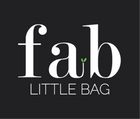
Menstrual Cups: Are They The Only Way To Have An Eco Period?
Written by Sofia Olendraru
With the huge amount of waste generated by conventional pads and tampons (some pads can contain up to five plastic carrier bags worth of plastic per pack), it is important to find ways to have a more sustainable period. Menstrual cups are often seen as the best solution for eco-friendly periods, but are they the only option? In this article, we will be exploring other, sustainable period products that can make your cycle ‘greener’.
What Is The Most Sustainable Period Product?
You can find disposable products such as pads and tampons that are made of sustainable materials such as organic cotton or bamboo fibres, which are less chemical-based than the typical cotton and rayon used in the bigger brands. These can be combined with reusable options, for example by using disposable tampons with a reusable tampon applicator rather than one that is thrown away each time, especially plastic ones. If you are using eco-friendly disposable period products, make sure you are still binning them responsibly and not flushing them down the toilet! One great way to do this is to use sustainably sourced FabLittleBags, made from sugarcane and recycled materials, and the glue that seals them closed is vegan.
However, reusable period products, such as menstrual cups or period underwear, are usually considered more environmentally friendly as they do not generate any waste and last much longer. Menstrual cups, made from medical grade silicon, are inserted inside the vagina similar to a tampon and can last up to ten years when looked after properly. Other options include reusable pads which can be attached to your underwear and washed after use, and period underwear, which is worn like normal underwear but contains layers of absorbing material that collects period blood and can last up to 100 washes! Reusables need washing, and adding them to your normal wash rather than creating a separate additional wash is the way to go to conserve water.
What Are The Advantages Of Using A Menstrual Cup?
The main advantage of menstrual cups is how eco-friendly they are compared to disposable products. They are also more budget-friendly: while a menstrual cup is a more expensive up front, typically costing between £12-20 each, buying one and using it saves money in the long run compared to the cost of pads and tampons which adds up over time. You only need to buy one or two cups which will last several years.

A menstrual cup can also be worn for longer than pads and tampons (up to 12 hours) and they can take up more blood, so they are useful overnight or for people with a heavier flow, and some users often find them more comfortable than pads and tampons.
Top Tips On Using Menstrual Cups For Beginners
Menstrual cups come in different sizes, typically for people who have and haven’t given birth vaginally, so it is important to make sure to buy the correct size. Many people might find the idea of inserting a menstrual cup in their vagina daunting at first, so if you are a pad user it may be worth experimenting with tampons before making the big change to a menstrual cup.
The insertion and removal technique can be tricky to get used to so it can be useful to practise it before getting your period. Menstrual cups can also be worn in combination with another product such as a pad or period underwear to catch any potential leaks. After removal, the cup should be washed with water and gentle soap and sterilised between periods by rinsing it in boiling water. The cup will usually come in a box with a guide on how to use it and care for it, and many helpful detailed guides can be found online as well. FabLittleBags are useful storage holders for both a spare cup and a used cup if you have had to change it at work for example and you can’t wash it out properly.
Menstrual cups are perhaps the most famous way of having a sustainable period, but they are not the only eco-friendly period product available. There will be something for everyone, we encourage you to try them all and find which one, or which combination of products suits you best. This may also change over time so it is great that people with periods now have a range of choices!
